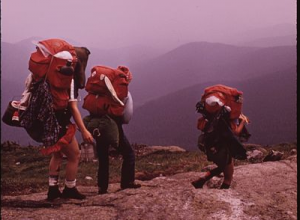Snow melts, summer seems like a possibility, and suddenly hiking and biking gear seems fascinating in a way it didn’t three weeks ago. The seed takes root; a few days later you invent a reason to swing by your local outfitter. You daydream about day hikes. Then something a little longer. And gear that seemed like a luxury in January—because it would let you shave what, a few ounces off your pack?—now seems like an age-related necessity. You show your spouse and anyone else who’ll look this article, which assures you that “taking 20 pounds off is like taking 20 years off” (which is also a reminder about portion control).
You weigh your gear to see exactly how much you carried last year. Then you start looking for ways to trim. Your research takes you to websites where zealots defend this shoe or that bag and other websites where the debate has expanded to the best ways to track weight. Spreadsheets? This app? This new app?
You’ve moved quickly from faint curiosity to the person who wonders how much a spork weighs, haven’t you? Moving to the next phase—full-on obsession—is time-consuming and expensive. But a couple of sites can help ease the transition.
First, REI has a nice introduction that differentiates between extreme ultralight hikers and folks who like to travel kinda light and the guy who thinks he needs a 12-pack and a boombox. Also visit the gear reviews at sites like Trailspace.
The mass market outfitters sell a lot of good gear, but it’s interesting to see what the subculture of small, typically hiker-owned suppliers have to offer. Here’s a helpful list of “cottage industry” ultralight gear-makers. You’ll find some interesting modifications of conventional designs; some of them will also custom-produce your personal inspirations. The site also has helpful tips, lists and reviews.
Next, you’ll also want to visit (or more likely revisit) some of the many personal blogs/websites, like Onestep Outdoors, Joe’s Ultralight Backpacking and Adventure Alan’s Ultralight Backpacking. These offer a happy mix of memoir, hard-won expertise and thoroughly non-commercial honesty.
Finally, take a side visit to ExplorersWeb. Check out the gear there, which includes high end satellite phones ($900, on clearance) and PDAs used by teams when they make an assault on K2 or Gasherbrum I. You don’t need this, but it eases the sticker shock of what you will be buying. Altogether, your new pack and rain jacket and sleeping bag won’t cost that much, will they? No, they won’t. So, well done. Go nuts.
Photo: Anne LaBastille’s “Backpackers near the summit of Mount Marcy look southwest over the high peaks region of the Adirondack Forest” (1973), depicts a time before ultralight camping was fully embraced. Via Wikimedia Commons.










